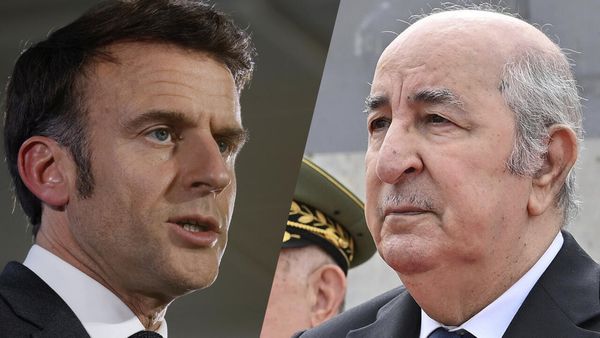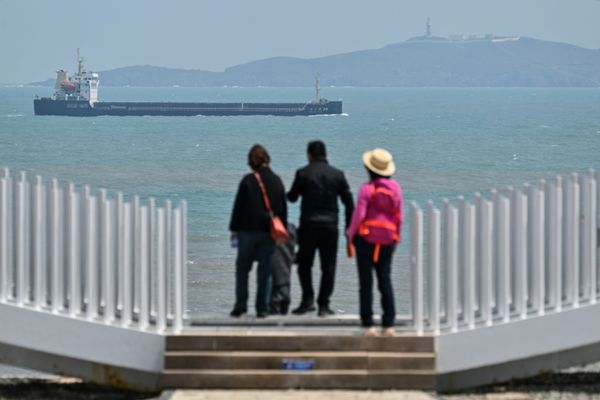"We have a little situation," Anthony Kiedis told the crowd.
It was Australia Day, 2000, and Red Hot Chili Peppers were playing before a heaving, partially clothed mass of thousands at the Sydney leg of the Big Day Out.
"It's not uncommon in a festival situation for people to get crushed like grapes up at the front," he told the audience in a break between songs.
"There's really not a lot you can do about it because asking everybody to step back is not very potent of a solution.
"But if you could just bear in mind that you don't hurt somebody, that you don't want to inflict difficulty on somebody breathing … and just change the whole vibe out there, so no-one's getting crushed."
Guitarist John Frusciante keeps starting to play Scar Tissue, one of their biggest hits, then stopping.
Over a break that lasts about 10 minutes, Kiedis pleads with the crowd to "stop fighting" and look after one another.
There are many examples of artists stopping their sets when audience members are in trouble.
Videos of these moments – from gigs by Foo Fighters, Adele, Linkin Park, the Chili Peppers and others – have been popping up all over social feeds this weekend as the fall-out continues from the deaths of the eight people in a crowd crush during a Travis Scott set in Texas.
They raise the question of what an artist standing before the white-hot energy of a festival crowd can and should do in these kinds of situations.
Astroworld under investigation
There is a lot we don't know about what occurred in Houston.
But a focus of two investigations, one of them criminal, that are now underway will be what the event's producers and Scott himself knew about the crush as it was happening.
The Houston Chronicle reported that Scott stopped numerous times during the set and told security to help when he noticed fans in distress.
However, Scott performed for about 35 minutes, despite fans experiencing trouble as soon as his set began and at least some crowd members chanting for him to stop.
In one video posted online, Scott stands metres from a fan who is being removed from the crowd unresponsive.
In another, he continues performing even as the flashing lights of emergency crews are visible from the stage.
Scott has said he was not aware of the magnitude of what was going on.
"Anytime I can make out anything that's going on, ya know, I stop the show and you know, help them get the help they need," he said in an online video.
Scott said the Houston Police Department had his "total support" in their investigation.
Many online are comparing Scott's actions with those of artists faced with similar situations.
In response to a question, "What is mosh pit etiquette", one Twitter user – in a post that has since been viewed more than 5 million times – shared a clip over the weekend featuring Mike Shinoda and Chester Bennington appealing to fans during a Linkin Park show.
"Sorry you guys, we gotta look out for safety first, for real. Nobody gets hurt, that's number one," Shinoda tells the crowd after the band stop playing mid-song.
In other videos, Billie Eilish and Adele stop singing in order to help fans who have fainted, while Dave Grohl demands the removal of a punter from a Foo Fighters gig for, literally, fighting.
The role of the artist
These situations are not analogous to the one Travis Scott was facing – after all, there were more than 50,000 people at the Astroworld Festival, an enormous crowd by any measure.
But they do shine a light on what constitutes "mosh put etiquette" as far as the person holding the microphone is concerned.
On Australia Day in 2001 – a year after that experience with the Chili Peppers – a crowd surge during Limp Bizkit's headline set at the Sydney Big Day Out led to the death of 16-year-old fan Jessica Michalik.
That tragedy led to a change in crowd management, specifically the introduction of the D barrier, which allowed organisers to more easily reduce the kind of crowd pressure that can be deadly.
But it also highlighted the role the artist plays.
While a coronial inquest into Jessica's death did not make a finding of negligence, it was critical of Limp Bizkit singer Fred Durst's "alarming and inflammatory" comments on stage as the rescue operation was underway and the fact the band did not completely stop playing.
The coroner also said Durst's actions during a similar incident at the Auckland leg – he poured water on the head of a festival official who was trying to calm the crowd – were "reprehensible".
Scott's actions will now face similar scrutiny. He has been named in at least one lawsuit already.
As gigs and festivals begin to return around the country, it will also likely prompt more artists and promoters think seriously about how those on stage and can help those in the pit.







